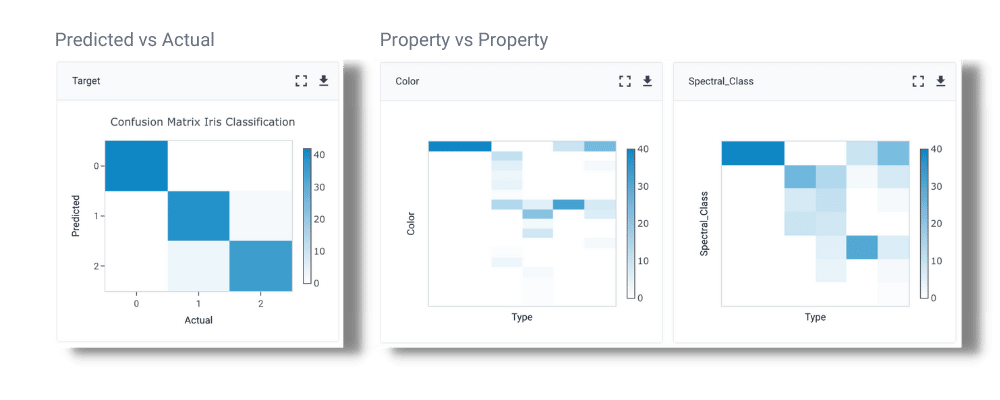Release highlights
The Alchemite™ 2022 Autumn Release is a milestone release of the machine learning software, bringing together the many new features delivered over the past six months. New features fall under three main themes.
Better results, faster – user experience enhancements have focused on streamlining your key tasks, while performance improvements keep Alchemite™ ahead in speed and accuracy.
The right tools for your experimental and process datasets – enhanced support for categorical data and improved handling of constraints when designing experiments.
Greater insights into your chemicals, materials, and processes – brand new analytics and predictive features help you drill down and develop your understanding.
What’s new?
Better results, faster

User experience and workflow.
A streamlined user interface for your key tasks: creating models, identifying optimal system inputs to achieve the target properties for your product or process, and guiding data acquisition when improving models.
Easier transitions between key tasks: a slicker workflow to move rows of data from one part of the platform to another, e.g., when manipulating and visualising rows from the original dataset, newly suggested experiments, or saved formulations.
Get started with less data: you can now train models using datasets as small as two rows with full validation.
Get started faster: improved sign-in flow and redesigned welcome page; improved links to documentation within the software.
Secure access made easier: integration with enterprise-level authentication providers; two-factor authentication.
More impact in presenting your results: you can now download many of the plots on the platform for presentations or reports.
The right tools for your experimental and process datasets
Significant enhancements to the handling of categorical data, which is often found in experimental or process datasets (e.g., colours, process types, materials classes).
Improved model performance on categorical outputs (using a categorical-specific optimisation function).
Upload and view categoricals as text (rather than numbers) across the entire platform, making it faster and easier to work with this data and to understand outputs.
New categorical data plot type enables better understanding of predictions involving this data.
More control in experimental design.
Impose more detailed constraints on what Alchemite™ proposes when suggesting new experiments. For example, you could specify a maximum number of ingredients to include when suggesting new test samples, enabling you to control costs or, more importantly, to work within practical limitations.

Greater insights into chemicals, materials, and processes
Drill into Alchemite™ predictions to really understand what is driving the behaviour of the system (e.g., a formulation, material, or process) that you are studying.
The new Sensitivity Plot shows how different inputs contribute to a given output prediction – e.g., which process parameters really affect the viscosity of your formulation?

The new Output Tolerance Plot allows you to see how your output properties vary due to uncertainty in the inputs – e.g., which ingredient do you need to focus on controlling to minimise risk that your material fails?
Dimensionality reduction visualisation.
Allows you to view in two dimensions a graphical representation of your entire, multi-dimensional dataset. The visualisation groups similar experiments as clusters of points.
You can include, on the same plot, new experiments suggested by Alchemite™ to allow you to quickly understand how these relate to your overall design space.